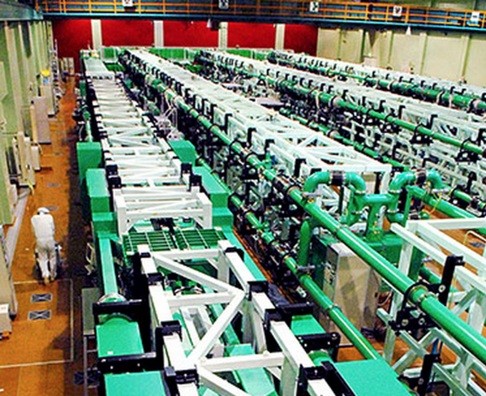World’s strongest ‘death beam’ from China still can’t fry an egg, but it could blind an enemy drone
Chinese scientists set a new record with powerful laser, which has potentially strong military applications but hampered by fact it only lasts for the blink of an eye.
Researchers from Shanghai have created the most powerful laser beam ever made with potentially wide-ranging applications in fields from nuclear physics to high-tech weaponry, according to their paper published in the latest issue of the journal
Optics Letters.
The beam reached a peak power of 5.13 petawatts (1 petawatt is equal to 1 billion millions watts), dwarfing the record set recently by Japanese scientists.
But the latest breakthrough appears to be grounded at present by an Achilles’ heel: It cannot sustain its peak power output for long, and lasted for less than 30 femtoseconds (30 quadrillionths of a second), according the to the team.
The new record was generated at the State Key laboratory of High Field Laser Physics under the Shanghai Institute of Optics and Fine Mechanics. The team was led by Professor Li Ruxin.
About six months earlier, researchers in Osaka produced their own trailblazing beam when they fired what at the time ranked as the world’s most powerful laser. The 2-petawatt (two quadrillion watt) pulse lasted just one picosecond (a trillionth of a second).
Dubbed the Laser for Fast Ignition Experiments (LFEX), it measured over 90 metres in length. The team said the laser’s strength was equivalent to 1,000 times the total capacity of all the world’s electronic appliances.
Prior to the Japanese development, the world had only seen a 1-pettawatt laser fired up at the University of Texas, Austin.
No laser weapon in existence today can reach petawatt-level. In a 2013 experiment, a German military laser destroyed a drone some 2 kilometres away and reached maximum power output of just 50 kilowatts.
To give a sense of scale, the new laser in Shanghai is over 20 billion times as powerful.
However, its poor power of endurance means that the total amount of energy generated by a single pulse was very low - 190 joules, barely enough to warm a cup of coffee.
It would take energy levels several hundred times higher to even fry an egg.
As such, it wouldn’t be of much military use in terms of downing drones, which would be impossible at this level of output, according to Professor Li Rukang.
Japan’s LFEX beam only held the world’s-strongest laser record for six months. Photo: SCMP Pictures
“Conventional laser weapons take very different designs. The original purpose [of the Shanghai beam] is not to form part of a laser gun or cannon,” said Li, a researcher at Chinese Academy of Sciences’ Key Laboratory of Functional Crystals and Laser Technology in Beijing. Li was not involved in the research.
Nonetheless, future military applications cannot be ruled out, Li said.
Because the powerful laser pulses can be generated at a high frequency, they could be used to blind or disable optical or electromagnetic sensors on enemy drones, aircrafts or warships.
Li was more excited at what the new finding could lead to in the lab.
Its enormous power could tear atoms apart, and by studying the process researchers may find new methods of generating nuclear power.
For example, very strong laser beams have been generated at research facilities in numerous countries including China, the United States and Japan to create and maintain nuclear fission, a tool for creating energy that, if done successfully, could permanently solve man’s energy needs.
This article appeared in the South China Morning Post print edition as Shanghai team sets laser power benchmark
Share
More on this story

